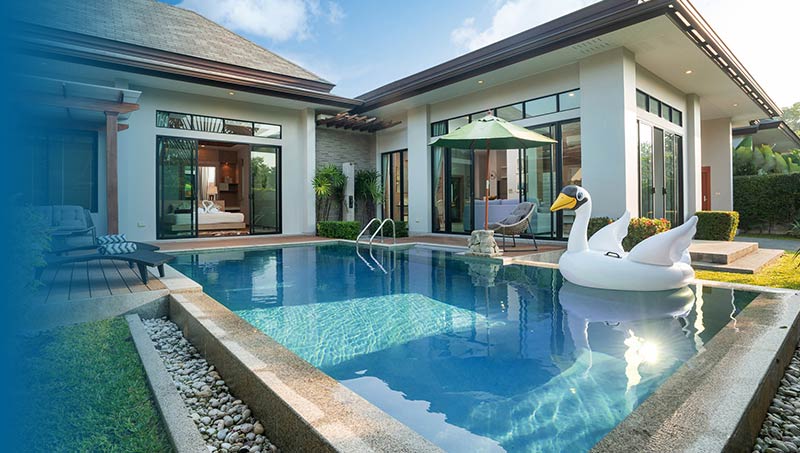Get the Facts
Much of the United States is facing ongoing drought conditions, but restricting water for pools and hot tubs is not the answer. Its critical to know the facts about pool and hot tub water use and benefits, as well as the implications of the pool, hot tub and spa industry on state and local economies.

FACT: The pool, hot tub and spa industry is an important part of state and local economies.
From builders to suppliers to maintenance workers, the pool, hot tub and spa industry is composed of local, small, often minority-owned businesses. Imposing such industry-specific regulations will put hundreds of local workers out of business and mean less money for local governments that rely on building permits as revenue generators. Every industry should be working together to save water during the drought.
FACT: Pools, hot tubs and spas use substantially less water than comparable landscaped and planted areas.
Outdoor water use accounts for more than 30 percent of total household water use, on average, but can be as much as 60 percent of total household water use in arid regions. A well-maintained pool or spa uses significantly less water per day than an irrigated lawn. Most pool designs include more than just the pool itself; wooden or concrete decks also replace traditional lawns and landscaping. Lawn irrigation use equals 49 inches per year and swimming pool requirements are 39.6 inches per year, less walkway and decking areas equal to the actual pool area, which reduces total pool water use to 20 inches per year.
- Independent studies show that the average swimming pool installation will use one-third of the water a lawn of the same square footage requires. In other words, a well-maintained pool and surrounding decking uses significantly less than the amount of water a lawn uses in the same period.
- Even building and filling a new pool requires less water than a lawn. On average, water use, including filling, in the first year a pool is installed is 32,000 gallons. A 1,200 square-foot lawn uses approximately 44,000 gallons per year.
- Average water savings for first year (including filling the pool): 12,000 gallons per pool
- Average water savings for subsequent years: 30,000 gallons per pool
- Hot tubs are incredibly water-conscious
- Hot tub water, once cooled, can be re-used for lawns and landscaping. Any chemicals break down within 48 hours, making spa water safe for plants.
- The industry is taking steps to educate the pool-owning public to reduce evaporation loss through the use of solid pool covers, solar pool covers, or other devices when pools are not in use. This effort could significantly reduce total evaporation rates since the pools would be covered at the times when the evaporation rate is the highest
